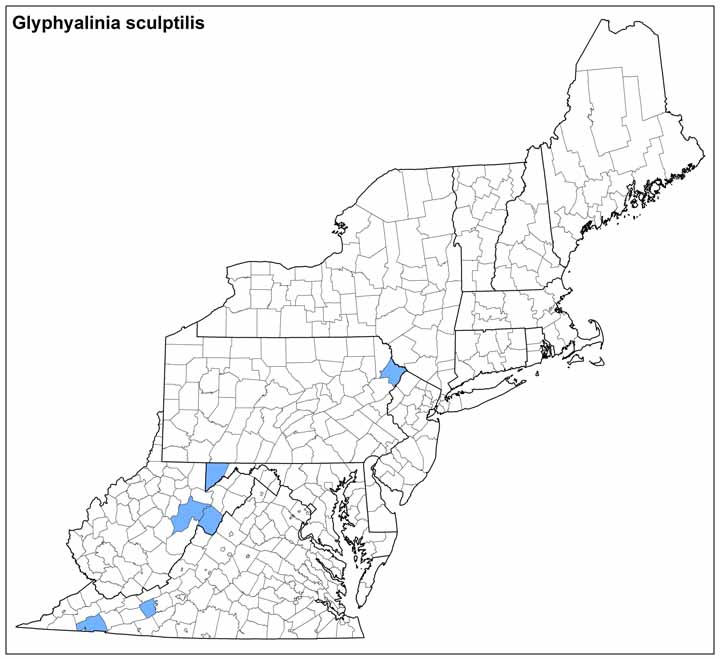Land Snails
.jpg)
.jpg)
.jpg)
Photo(s): Views of a Glyphyalinia sculptilis shell © Dan Dourson.
Click photo(s) to enlarge.
Glyphyalinia sculptilis (Bland, 1858)
Family: Zonitidae
Common name: Suborb Glyph
Identification
Width: 12.7 mm
Height: 6.5 mm
Whorls: 7
Glyphyalinia sculptilis is a very large glyph. It has a depressed and tightly coiled shell with a slightly elevated spire. The inner edge of the aperture curves over and nearly fills the small umbilicus, leaving only a small perforation. The shell is sculptured with closely and regularly spaced narrow indentations that run parallel to the nearly invisible growth lines. The shell is brown to light brown apically and fades to light whitish-brown on the base.
The dorsal surface of this animal is bluish-black. For its reproductive anatomy, the penial retractor muscle and epiphallus join the penis sub-apically, and the apical chamber of the penis contains dense papillae that are not thorn shaped.
Ecology
This animal is found in deep, moist leaf litter in upland woods, often in cove forests. Individuals from ridge tops and drier forests are often smaller.
Taxonomy
This animal has also been called Helix sculptilis, Zonites sculptilis, Vitrea sculptilis, and Retinella sculptilis.
Distribution
Glyphyalinia sculptilis is widespread, occurring from eastern Kentucky and southwestern Virginia to eastern Louisiana. In Virginia it is known from Washington County, but it may also occur in other counties in the extreme southwestern corner of the state.
Conservation
NatureServe Global Rank: G4, Apparently Secure.
NatureServe State Rank: Virginia, S1, Critically Imperiled. Not Ranked in Pennsylvania, Maryland, or West Virginia.
Virginia’s wildlife action plan: Tier IV
John Slapcinsky 10/2012
Range Map (click to enlarge)


